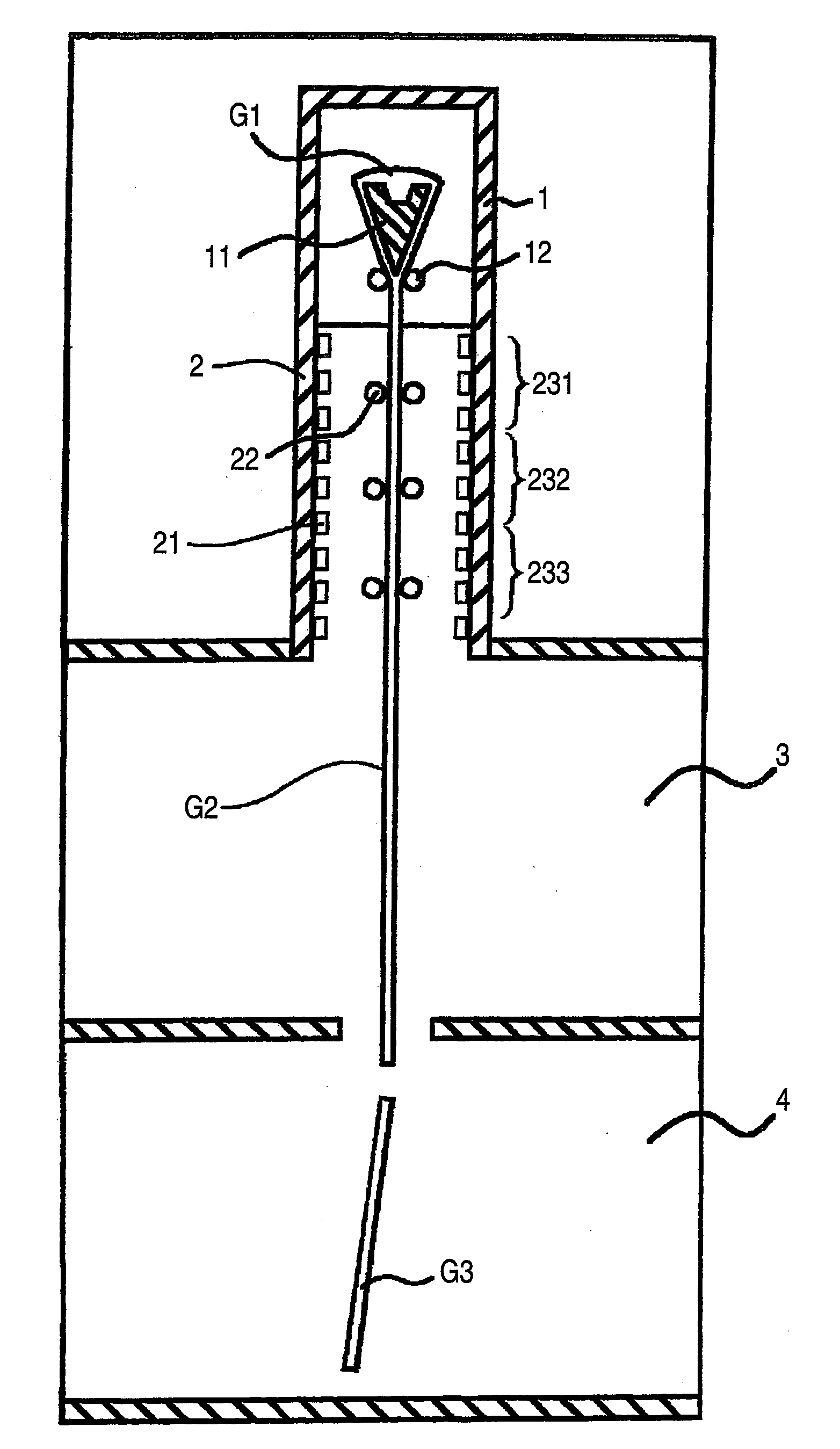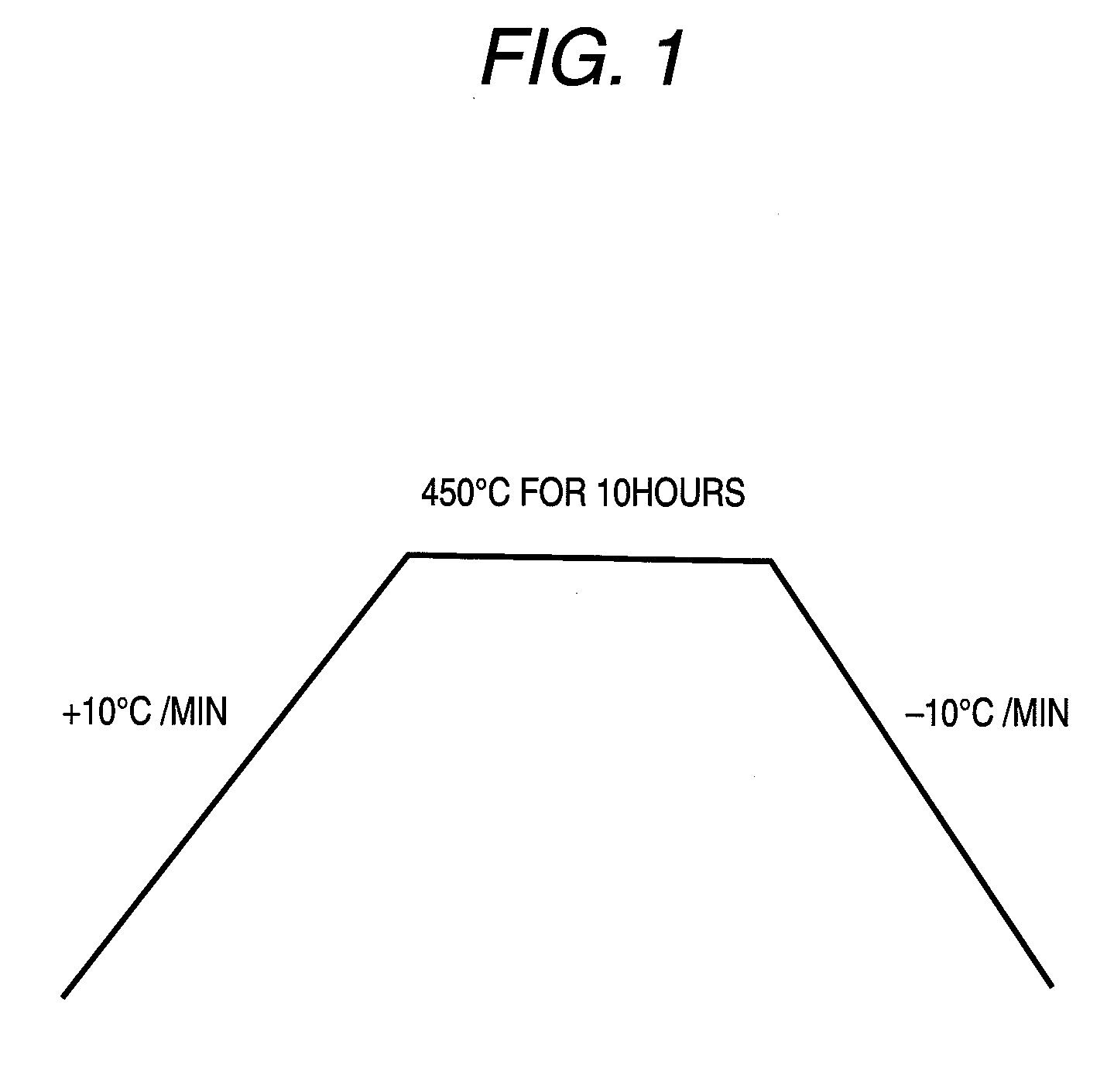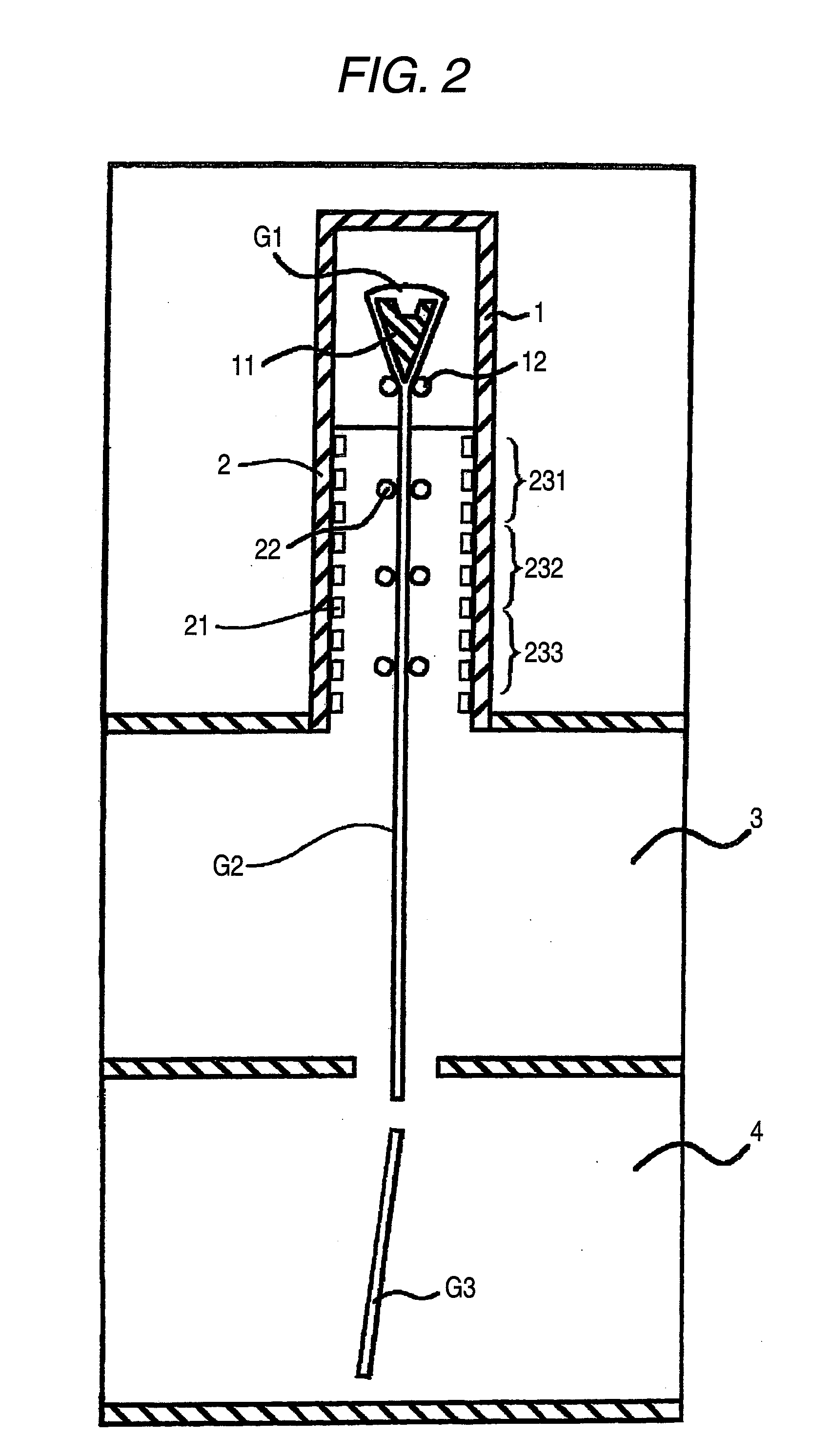Process for producing glass substrate and glass substrate
a technology of glass substrate and glass substrate, which is applied in the direction of glass rolling apparatus, glass tempering apparatus, instruments, etc., can solve the problems of not maintaining electric properties, difficult to reduce the thickness of glass substrate, and inability to dispose of a long annealing furnace like in the float method, etc., to achieve the effect of increasing the cost of polishing, and increasing the size of glass substra
- Summary
- Abstract
- Description
- Claims
- Application Information
AI Technical Summary
Benefits of technology
Problems solved by technology
Method used
Image
Examples
examples
[0138]Examples and Comparative Examples of the invention are described in detail hereinunder, with reference to the drawings attached hereto.
[0139]FIG. 2 is an outline front view showing a production apparatus for a glass substrate in carrying out the invention. The production apparatus is for producing a glass substrate according to an overflow down draw method, and includes a forming furnace 1 in which a molten glass G1 fed to the funnel-like forming body 11 having a nearly wedge-shaped cross section is made to overflow out from the top thereof and is fused at the bottom thereof to form a glass ribbon G3, an annealing furnace 2 in which the glass ribbon G2 is annealed to reduce the thermal shrinkage thereof, a cooling chamber 3 in which the annealed glass ribbon G2 is fully cooled, and a cutting chamber 4 in which the cooled glass ribbon G2 is cut into a predetermined size, each disposed in that order from the top thereof. In this Example, the overall length of the annealing furna...
PUM
| Property | Measurement | Unit |
|---|---|---|
| temperature | aaaaa | aaaaa |
| width | aaaaa | aaaaa |
| liquidus viscosity | aaaaa | aaaaa |
Abstract
Description
Claims
Application Information
 Login to View More
Login to View More - R&D
- Intellectual Property
- Life Sciences
- Materials
- Tech Scout
- Unparalleled Data Quality
- Higher Quality Content
- 60% Fewer Hallucinations
Browse by: Latest US Patents, China's latest patents, Technical Efficacy Thesaurus, Application Domain, Technology Topic, Popular Technical Reports.
© 2025 PatSnap. All rights reserved.Legal|Privacy policy|Modern Slavery Act Transparency Statement|Sitemap|About US| Contact US: help@patsnap.com



